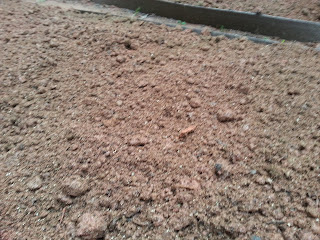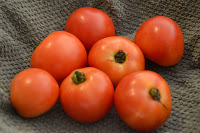Central Park in Cumming, GA has something for everyone with a great social atmosphere.
Trails
We've been going to Central Park quite a lot lately now that the marathon training is in full force. The one mile paved trail is convenient for easy days and recovery days where I run three miles or fewer. Anything more than three laps around the loop becomes mind-numbing.
The park has a few hills that are great for building leg muscles, which will help with speed in the long term. There’s an insanely steep hill on the south end of the park heading down towards the creek. Look for the lone weeping willow. The more gradual hills are towards the southeast. I’d run up and down these with my husband a few times each week for about two weeks.
Mountain Biking
I’ve gone mountain biking with my husband about four or five times here. The trails aren’t labeled very well anymore since park staff is rearranging and rehabilitating some parts of the park. Generally speaking, most of the course to the northwest of the park is green. Going southbound is gets into blue territory with a challenging patch under the trees in the southeast corner of the park. I hate this area. Repeat: hate. It’s riddled with roots, rocks, gravel, and death-inducing pump tracks that have sharp pointy rocks at the bottom and slippery roots at the top. Real mountain bikers generally like these challenging parts, though. I just want to cry. *Sorry hubby*
 |
| Image by Kurt Picker |
I’ve never touched the black trail. Myth tells me that it’s a cardio challenge up a huge mound that use to be a landfill. The mound rests in southwest overlooking water purification center. The hillsides are steep and the path is narrow in some places.
Disc Golf
The park staff recently rerouted the disc golf course. Chaos ensued. People who like the old path are still taking it, generally working in the opposite direction of those who are following the new course. Overtime, I think people will get use to the new arrangement but for now it’s a cluster-mess of flying discs.
Quite a few pro players come out to test their skills here. It’s a decent challenge, with a variety of terrain and obstacles to overcome. Most of the trails do not interfere with pedestrian access to the park, which I like. As a rookie disc golfer I like being able to practice without the fear that I’m going to knock someone’s head off.
Facilities
The onsite gym is great for exercising on rainy days. It does require a membership, though, which is competitively priced to other gyms.
The facilities are maintained quite well from what I’ve seen. As far as complaints go, some request more short term storage for those who simply want to walk the indoor track, take a class, or play basketball without having to leave valuables in their car or on the sidelines. The lockers are in the upstairs weight room, a short trek away. What? If you’re at the gym to exercise, why complain about walking upstairs to the locker rooms? It’s called exercise.
Atmosphere
The best part about Central Park is the active atmosphere. There is always a decent crowd of (generally) kind and good-spirited folks.Seeing people of all ages walking, jogging, playing disc golf, soccer, football, softball, baseball, and cheerleading is really encouraging. It makes you want to be more fit! The people-watching also makes the repetitive runs around the track more entertaining.
If you live in Forsyth County, you should definitely check it out!





















